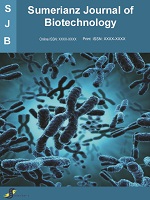Sumerianz Journal of Biotechnology

Online ISSN: 2617-3050
Print ISSN: 2617-3123
Quarterly Published (4 Issues Per Year)
Journal Website: https://www.sumerianz.com/?ic=journal-home&journal=32Archive
Volume 3 Issue 3 (2020)
A Study on the Nutritional and Antimicrobial Properties of Dialium Guineense (Velvet Tamarind) PULP and Seed Coat
Authors : Nwabuzor R. I. ; Mike-Anosike E. E. ; Braide W.
Abstract:The fruit pulp and seed coat of Dialium guineense (Velvet Tamarind) from two different locations was analyzed for their chemical composition, amino acids, vitamins and minerals using standard methods. The anti-nutritional properties of the plant materials were analyzed to determine the phytochemical components using standard methods. The antimicrobial properties of the methanolic and ethanolic extracts of the fruit pulp and seed coat were examined using dehydrogenase (DHA) assay with 2,3,5-triphenyltetrazolium Chloride (TTC) as the artificial electron acceptor. Bacterial isolates, Pseudomonas aeruginosa, Escherichia coli, Salmonella typhi and Candida albican were exposed to various concentrations of the extracts ranging from 0-1800 µg/ml in 4 ml volume of nutrient broth-glucose-TTC medium. The inhibition of DHA activity in the bacterial isolates by D. guineense extracts were calculated relative to the control and the toxicity threshold concentrations (IC50 and IC10) were determined from the linear regression plots. The plant materials contain crude protein, ether extract, Ash, Crude fibre, moisture and NFE; minerals such as, sodium, iron, zinc, calcium, magnesium, copper and selenium as well as vitamin A and C in different quantities based on the location. The fruit pulp contain both essential and non-essential amino acids. The phytochemical screening showed the presence of oxalates (3.065-14.775 mg/100 g), Tannins (0,085-0.606 mg/100 g), Phytic acids (1.65-3.68 mg/100 g), Alkaloids (2.405-3.345 mg/100 g), Phytates (0.365-0.535 mg/100 g) and cyanides (4.045-7.02 mg/100 g). The extracts demonstrated good antimicrobial activities with broad spectrum though not better than the conventional antibiotics. The rich nutritional composition of the fruit makes it an excellent dietary supplement for both infants and adults.


